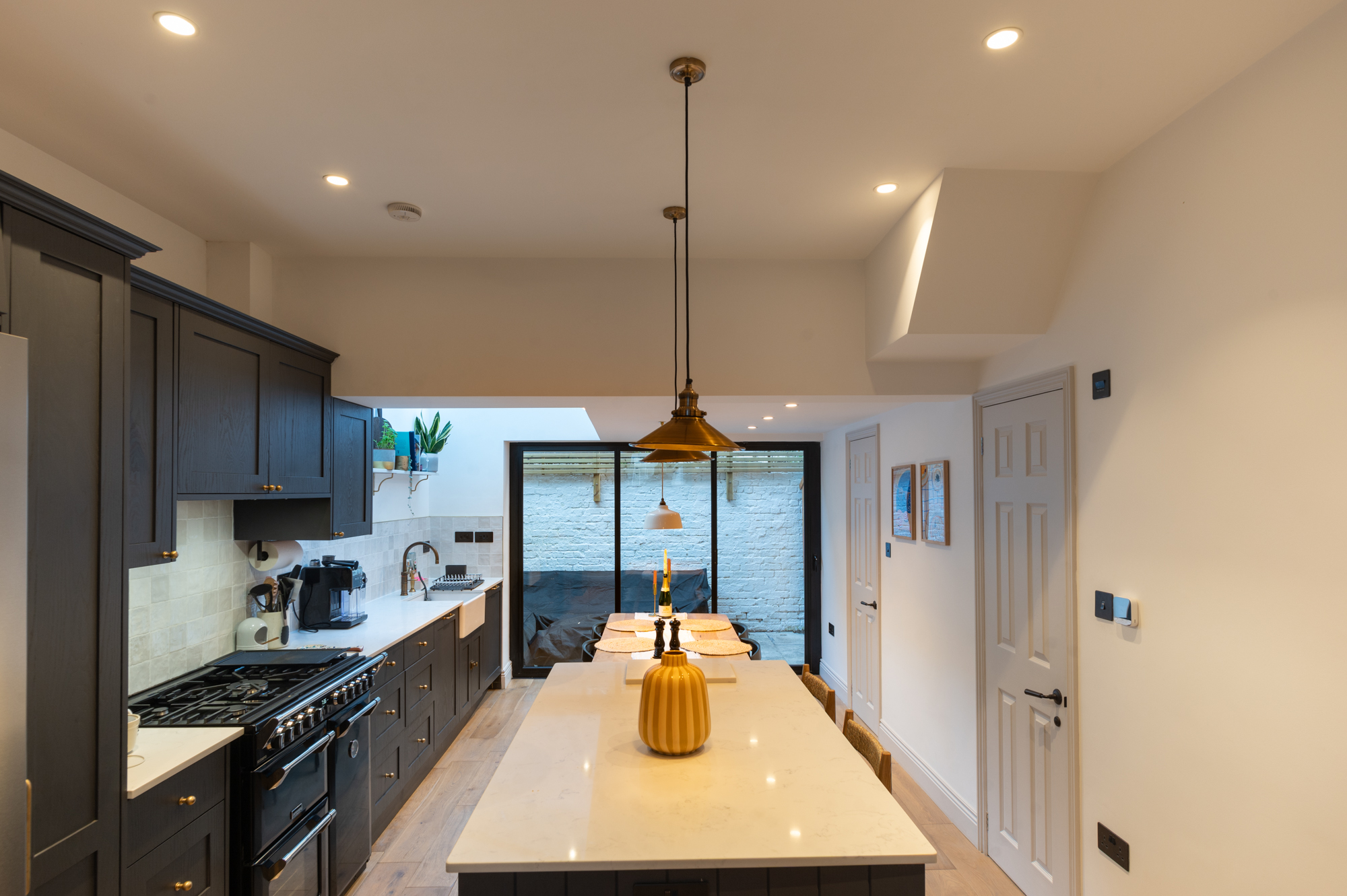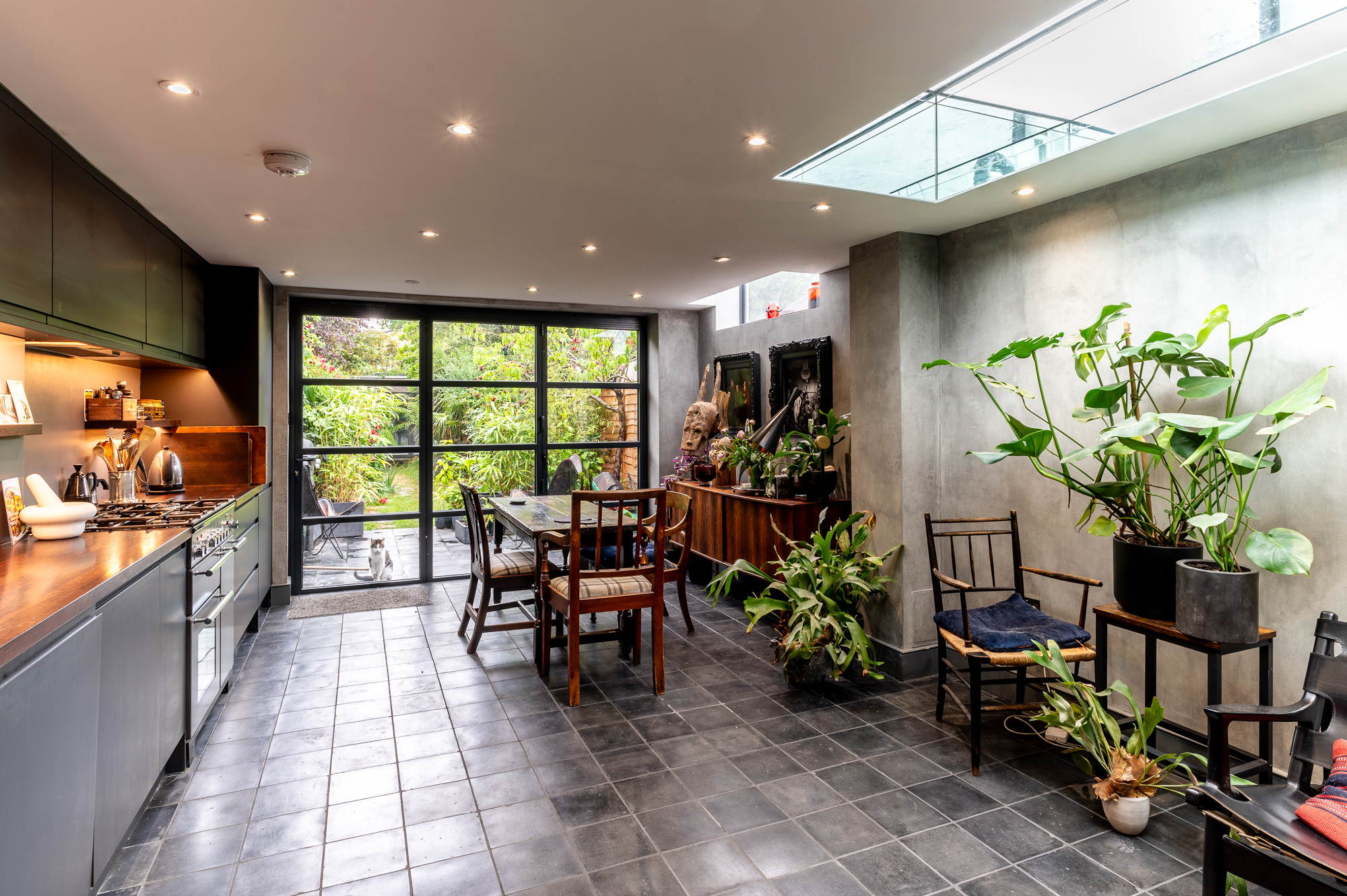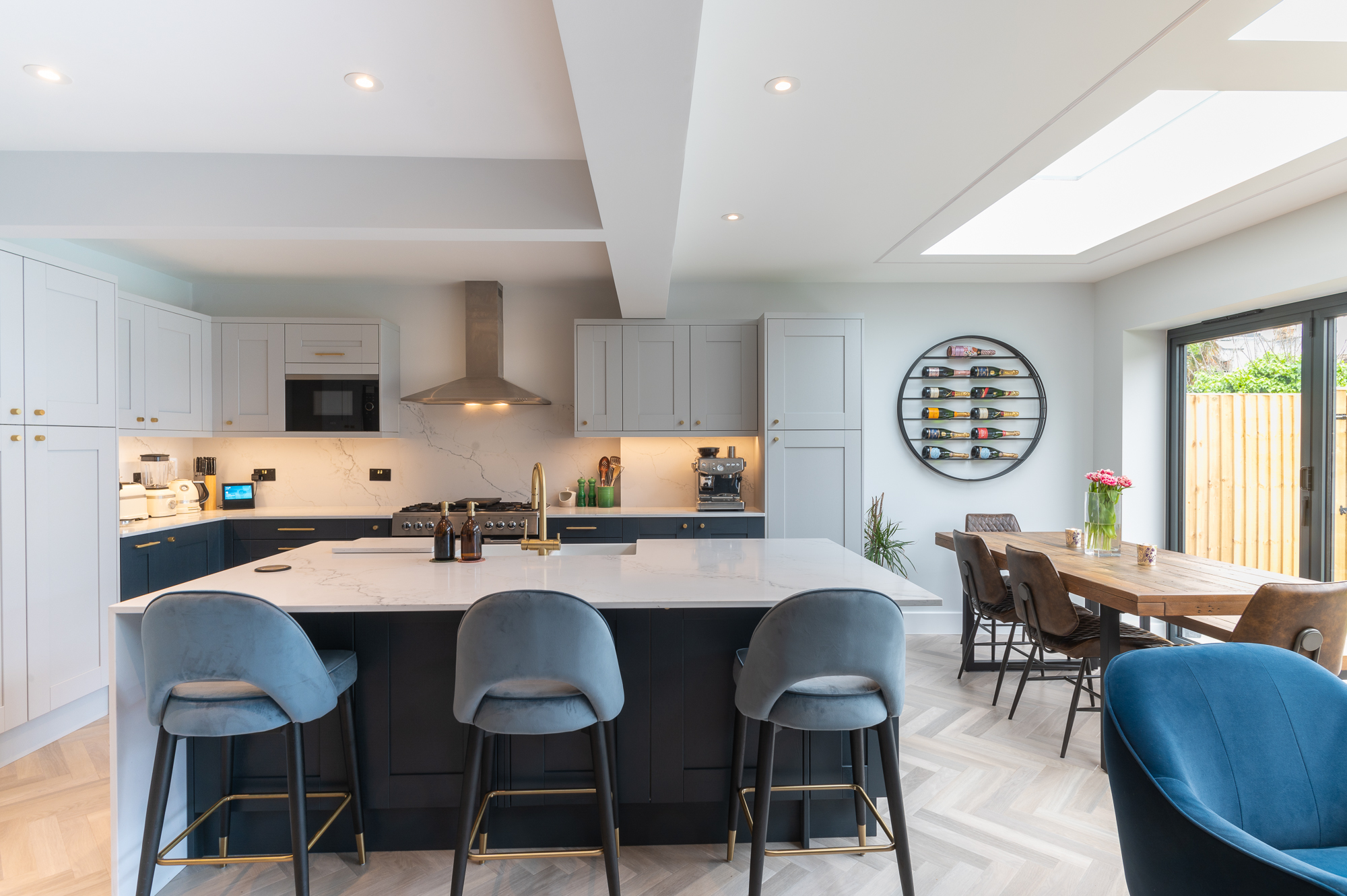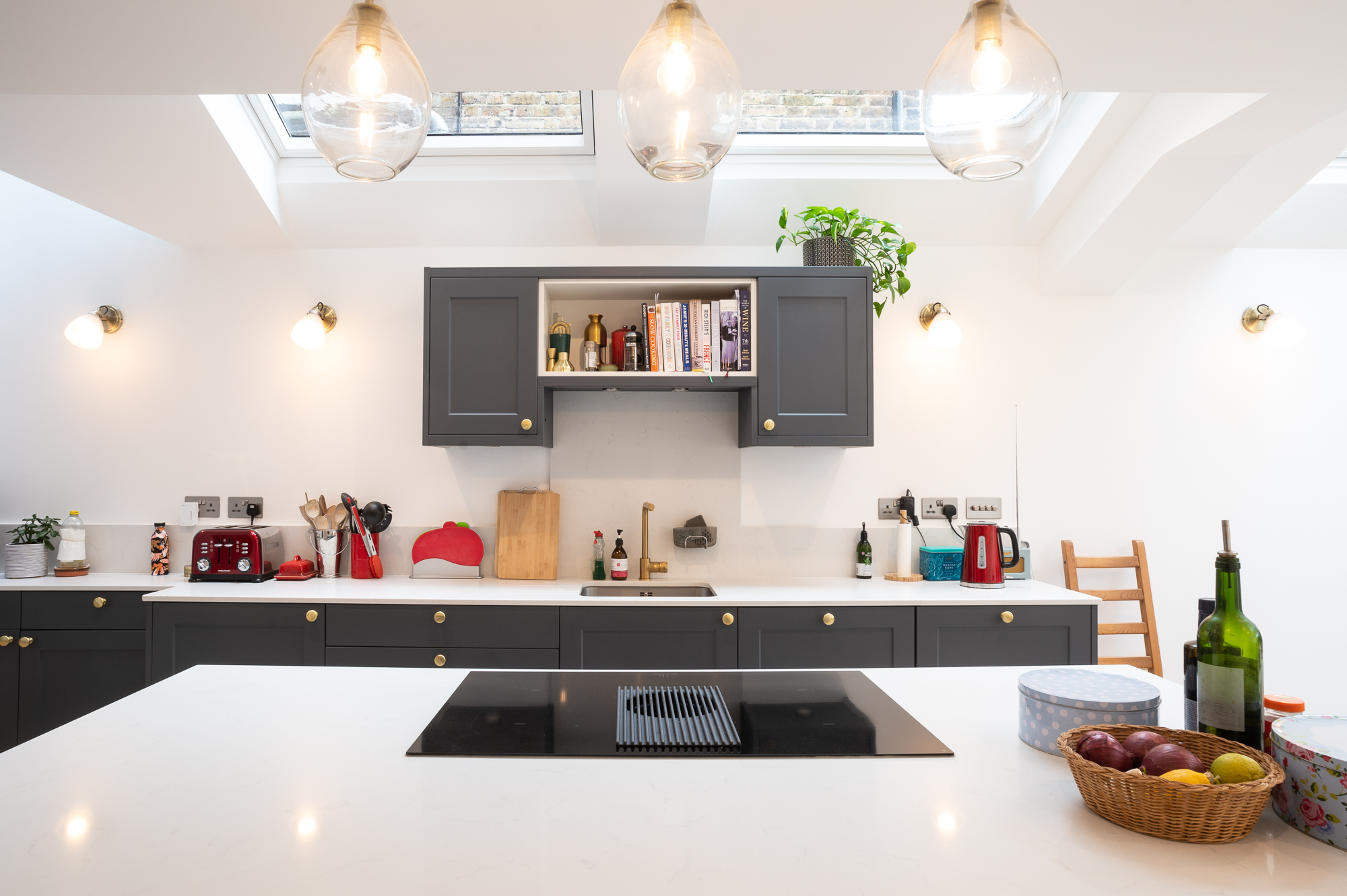It is the magic letter that makes the difference. An L-shaped loft conversion is constructed by connecting two dormers at a right angle to each other, forming an L shape. While the larger dormer sits on the main roof, the smaller section stands on the rear roof. The new roof is almost flat, but a 1:50 fall to the side creates rainwater drainage. A small-scale border is built around the perimeter of the construction to tone down the bulkiness of the structure by softening the sharpness of its features. It allows the existing roof slope to blend in with the new addition.
You get more than double the space that comes with a single dormer. L-shaped extensions can generate several rooms or two generous sized rooms. A decent-sized master bedroom with en suite bathroom can fit in the new space comfortably. You can achieve plenty of natural light with this type of loft conversion.














